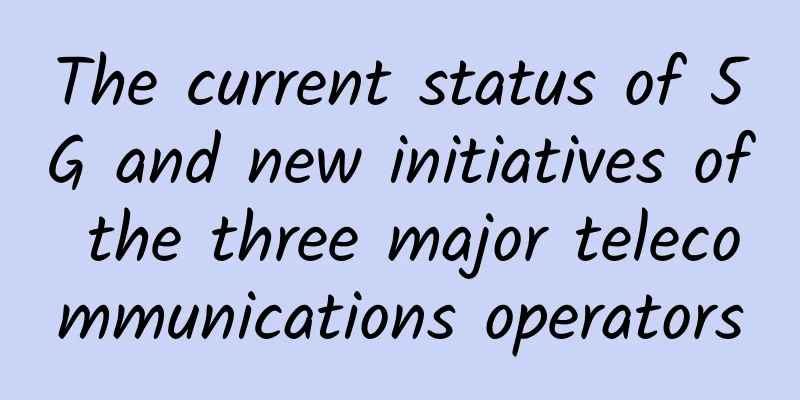How should building owners prepare for 5G?

|
Few technologies have been in the spotlight as much as 5G lately. Everyone is talking about the next generation of cellular network technology, but there doesn’t seem to be a lot of practical information out there. Is 5G just a buzzword, and should you plan to take advantage of it? When investing in new technology, be cautious. You don’t want to spend all your time and money implementing something that’s gradually becoming a trend. However, as 5G networks begin to take off, they deserve your attention. 5G technology shows a lot of promise, but it’ll be a while before we can fully use it. Here’s what 5G can do for buildings and how we can prepare. What can 5G do for your tenants? You’re probably aware that 5G promises significant improvements in speed, latency, and bandwidth. On the surface, that means your tenants can have faster, more reliable cell service. These upgrades also enable a number of other desirable features for your building. 5G can support more devices in one area than 4G or Wi-Fi, which is ideal for smart home technology. Already, 69% of U.S. households have at least one smart home device, and 18% of them have more. Given how popular these technologies are, being able to support more of them is a big benefit. With 5G, you can realize an ecosystem of hundreds or even thousands of smart devices. You can turn your property into a vast, interconnected digital environment where countless IoT gadgets can improve its comfort and value. Tenants can also connect more devices without worrying about interruptions or slow internet speeds. As for how 5G will affect your tenants' call quality, there won't be any major changes. Video calls will be smoother and more consistent, but voice calls will remain the same. You won't have to worry about 5G interrupting voice calls, but it won't be a noticeable improvement either. What new infrastructure does 5G require?
5G can do a lot for your building, but how much will it cost? Just like the transition from 3G to 4G, the move to 5G will require some new infrastructure. This infrastructure is likely to be expensive, increasing mobile companies’ network-related costs by up to 60% over the next five years. Given that expense, 5G will appear in major cities first and will roll out slowly. Carriers can be picky about where they install new base stations, so getting 5G coverage can be challenging. It's also worth remembering that 5G networks have different infrastructure requirements than today's connections. 5G signals can’t reach as far as 4G, so more antennas are needed in the same space. As a result, these networks will rely more on small cells to ensure reliable coverage in smaller areas. If you’re preparing for 5G, you have to make sure you have enough space and capacity to accommodate these small base stations. 5G frequency differences We should also know that there are three different frequencies for 5G: low-band, mid-band, and high-band 5G. High-band (often called millimeter wave, mmWave) provides lightning-fast service over a smaller area. Mid-band and low-band 5G use sub-6GHz frequencies, like 4G, and have wider coverage than mmWave, but not as fast as mmWave. Even lower 5G frequencies will still be an improvement over today's networks. Low-band 5G can reach speeds of 250 Mbps, and mid-band can reach 900 Mbps. Regardless of the frequency, 5G will be a substantial improvement over 4G. When considering an investment in 5G, you need to consider whether you want mmWave, mid-band, or low-band service. The most aspirational statements you'll hear about 5G usually refer specifically to mmWave technology. This service will support future technologies like driverless cars, but it may not be worth it in residential applications. Since today's 4G networks already use sub-6GHz frequencies, low- and mid-band 5G probably won't require new infrastructure. Even if they do, they won't need much, making it more accessible and affordable than mmWave. Balance current needs with future possibilities There are already 5G-enabled devices on the market, and all major carriers offer 5G in certain areas. It may take some time for these networks to replace 4G LTE, but it's not as far away as you think. In the next few years, having 5G technology can be a significant selling point for potential tenants. That said, you don’t need to rush to embrace 5G technology. It’s a good idea to be prepared, but don’t alienate 4G users in the pursuit of 5G. Don’t replace all of your cellular infrastructure just yet, but you may want to create space and budget for 5G. You may want to look for low- to mid-band 5G devices, as this will require the least interference. If your building is located in a larger city, mmWave technology may be easier to use, so you can move in that direction. In either case, you can start preparing your building to handle additional devices before investing in the network itself. Keep in mind that 5G networks don't currently offer anything close to their potential. With today's limited infrastructure, most 5G networks are only slightly faster than 4G, if at all. It will be several years before 5G delivers on its promise, so invest slowly. It’s time to start thinking about 5G 5G may not be here yet, but it could be here before you know it. If you want to attract tenants in the future, you should prepare for tomorrow’s technology. Given its expense, it’s best to take a slow, cautious approach to investing in 5G, but be aware of it. As these networks start to come up, you can increase your investment in them. You don't need to put everything on 5G right away, but it's not a bad idea to start investing. The demand for 5G isn't high right now, but it might be in the future. |
<<: After running blindly, how much money did operators make from 5G?
Recommend
Talk about the past and present of WiFi
When it comes to the development of WiFi, we have...
Hacking Bitcoin and the Blockchain
Turn on the TV or read a tech blog, and you will ...
What technical support is needed to build a fixed network architecture based on SDN/NFV?
As of the end of October 2016, the number of Chin...
The turning point has arrived, and operators will face major changes in 2019
According to the financial report, China Telecom&...
Making cities smarter! Huawei's smart city nervous system demonstrates stronger capabilities from bottom to top
[51CTO.com original article] On the morning of Au...
Network Performance Monitoring and Diagnostics Market Guide (2020 Edition)
With the acceleration of cloud migration and the ...
What kind of storm will 5G, the Internet of Things, and artificial intelligence bring?
AI technology and TOT technology Ultimately, this...
Accelerating 5G standardization requires coping with the complexity of test scenarios
The fifth generation of mobile communication tech...
SPI Subsystem SPI Driver
1. SPI driver source file directory Linux common ...
CloudCone Black Friday pre-sale released, Los Angeles MC data center KVM annual payment starts from $14.2
Black Friday is still a long way off, but some bu...
The three-year bloody CDN price war has ended, but traditional vendors have been crippled
[[237506]] Image source: Visual China In the clou...
Discussion | Technical advantages of the top 9 leading SD-WAN providers abroad
SD-WAN technology helps make wide area networks m...
Quickly understand the characteristics and differences of HTTP1.0 1.1 2.0 3.0
HTTP1.0 HTTP version 1.0 is a stateless, connecti...
HostNamaste: $18/year-1.5GB/30GB/1.5TB Los Angeles & Dallas data centers
HostNamaste is a foreign hosting company founded ...
The three major operators have cancelled data roaming charges, and data charges still have room for reduction
Recently, China Mobile, China Telecom and China U...









